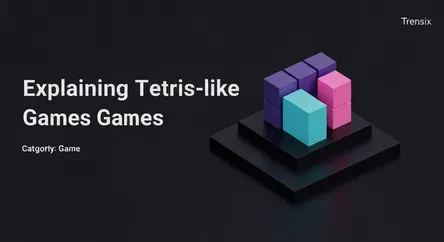Game
Explaining Tetris-like Games

Discover 'Tetris-like' games, a popular puzzle genre where players fit falling blocks into lines. Learn why this timeless mechanic stays popular.
What is it?
'Tetris-like' describes a subgenre of puzzle games based on the core mechanic of the classic 1984 game, Tetris. The fundamental gameplay involves manipulating falling geometric shapes, often called 'tetrominoes,' to arrange them into complete, solid horizontal lines at the bottom of a playfield. Once a line is formed, it disappears, and any blocks above it fall to fill the space. Players score points by clearing lines, and the game ends when the blocks stack up to the top of the screen. While many variations exist, this central concept of clearing lines with falling, interlocking shapes is the defining characteristic of any game described as 'Tetris-like'.
Why is it trending?
The 'Tetris-like' mechanic remains perpetually popular due to its perfect balance of simplicity and depth. It's easy for anyone to understand but offers a high skill ceiling for competitive play, as seen in modern titles like Tetris Effect: Connected. This accessibility makes it a staple on mobile devices and a constant source of inspiration for indie developers who add new twists, like physics or battle royale elements. The satisfying, almost zen-like feedback loop of clearing lines keeps players engaged, while its nostalgic value ensures a dedicated audience is always ready for the next iteration.
How does it affect people?
'Tetris-like' games have a noted cognitive impact. Studies suggest that playing can enhance spatial reasoning, critical thinking, and reaction time. The process of quickly identifying shapes and planning their placement provides a robust mental workout. Emotionally, the act of bringing order to the chaos of falling blocks can be incredibly therapeutic and stress-relieving, inducing a 'flow state' where the player is fully immersed. This phenomenon, known as the "Tetris effect," can even extend to seeing the game's patterns in the real world, highlighting its powerful effect on the brain's organizational centers.